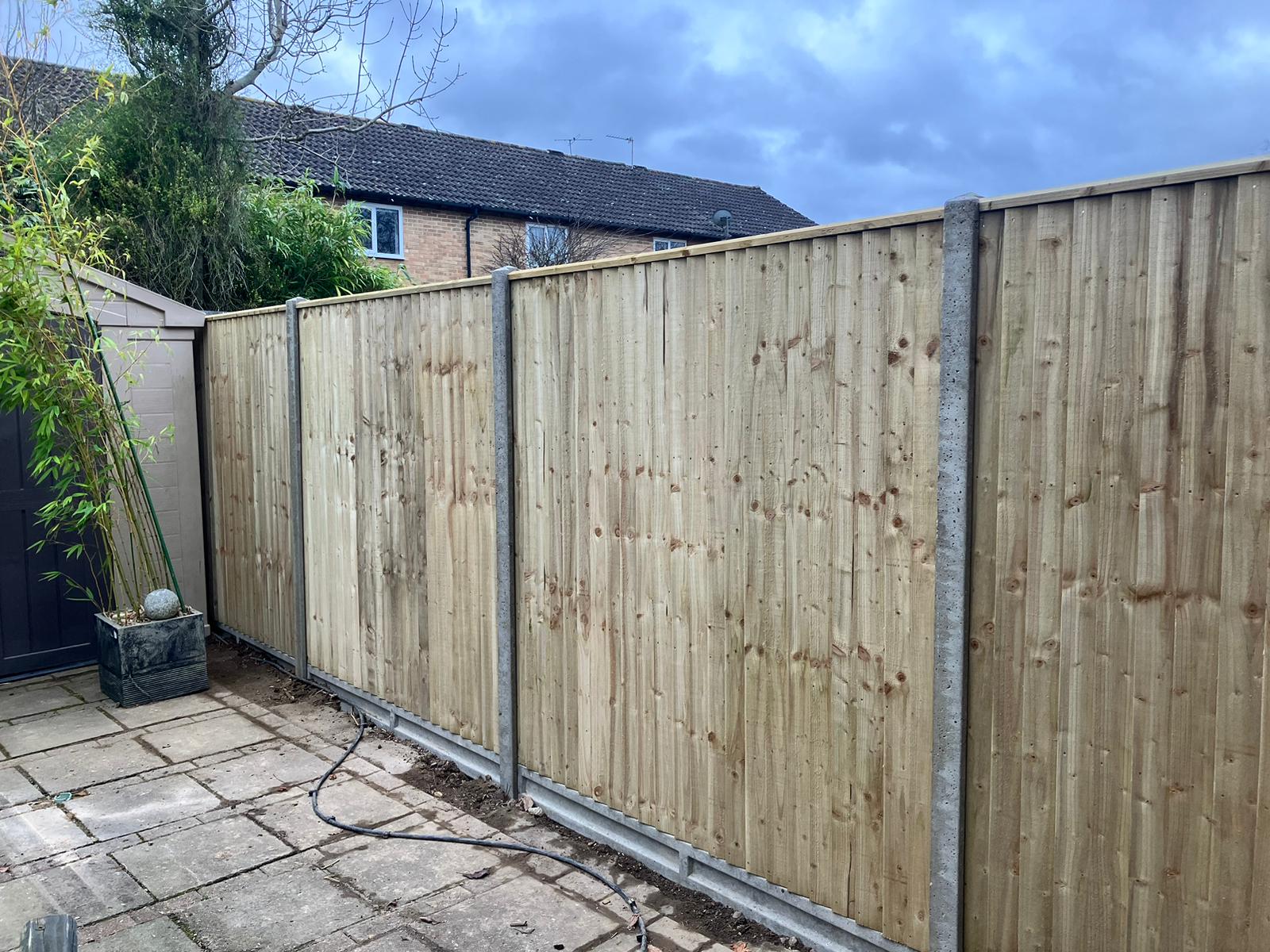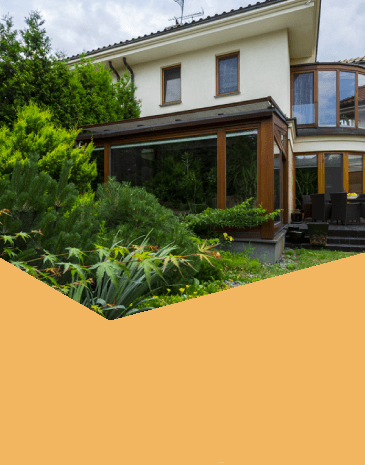

Are you contemplating a fencing upgrade? Selecting between different panel types can be puzzling.
When meditating on fencing options, the decision between Lap panels and Closeboard panels sets two distinct paths. Each provides characteristic aesthetics and functional benefits that cater to varied landscaping preferences and security necessities.
Lap panels, often heralded for their cost-effectiveness and ease of installation, differ fundamentally from Closeboard panels—the latter offering durability, robustness, and a higher degree of privacy. Striking the right balance between budget, longevity, and visual appeal hinges upon understanding the attributes of each fencing type.
Consider your priorities carefully.
Lap panels, also known as overlap panels, are a cost-effective and widely utilised fencing option which typically feature horizontal slats layered atop one another and supported by a sturdy frame. Their production involves a straightforward process, encompassing the use of softwoods which are economical, yet sufficiently resilient when treated, thus providing a satisfactory level of durability and a classic, agreeable aesthetic.
Their modular nature ensures a relatively simple installation, and their practical design allows for swift replacement or repair, making lap panel fencing a prevalent choice amongst residential property owners seeking a balance between affordability and satisfactory privacy.
Lap panels consist of horizontally-oriented slats—often of softwood—fixed together in an overlapping fashion.
Closeboard panels employ vertical feather edge boards for a continuous, robust facade that provides enhanced durability and privacy.
Closeboard fencing is structurally reinforced with thicker back rails and is a more robust alternative, offering greater resistance to the elements and long-term solidity.
The design of both reflects their functions; lap panels for cost-efficient boundary setting, closeboard for privacy and resilience.
Lap panels and Closeboard panels are prevalent choices for demarcating residential properties.
Lap panels offer a cost-effective method for creating property boundaries.
Closeboard panels are the choice for longevity and enhanced security.
Closeboard panels distinguish themselves through a composition that intertwines strength with privacy. Each slat is vertically aligned and overlapped, affixed to horizontal rails with rigorously placed fixings, thus forming a solid and continuous barrier. This intricate structure grants a robust defence against weather and external pressures. The adaptability of closeboard panels allows for bespoke heights and widths, catering to precise boundary measurements. With treatment, these panels possess an admirable lifespan, resisting decay and the voracious appetite of insects. Consequently, they are particularly suitable for properties that necessitate heightened security, seclusion, and a steadfast barricade against the elements.
Lap panels, commonly known as “overlap panels,” are crafted by horizontally overlaying slats of timber over a sturdy framework, creating a characteristic slated appearance. This traditional construction method provides an effective barrier while also allowing for some natural ventilation through the small gaps that appear between the slats.
Their assembly relies on fewer materials compared to closeboard panels, making them lighter and more manageable during installation. However, this design may offer slightly less durability under intense weather conditions.
Closeboard panels are renowned for their resilient construction, which involves the vertical placement of feather edge boards tightly overlapping to eradicate gaps, offering superior privacy and strength. The increased thickness and weight of the timbers used here contribute to their robust nature, effectively withstanding high winds and physical stress.
With robust back rails supporting the structure, the closeboard panels are further reinforced to endure the rigours of the environment. This meticulous formation allows the closeboard to be considered a paragon of wooden fence panel technology, offering enduring stability, superior privacy, and formidable resistance to wear and tear. Their impressive durability renders them an excellent investment for property owners seeking a long-term fencing solution that combines aesthetics with practicality. The “close” in closeboard is indeed representative of the tightly-constructed nature of these panels.
Closeboard panels are the pinnacle of privacy in residential fencing.
The substantial construction forms a formidable barrier against trespassers.
Densely arranged boards paired with robust back rails ensure a resolute guardian against disturbances.
Lap panels offer a straightforward, user-friendly installation process, typically involving pre-constructed panels that slot into place between posts with relative ease. Closeboard panels, however, demand a more involved assembly, necessitating the attachment of individual feather-edge boards to horizontal rails. Consequently, closeboard installation often calls for a seasoned hand to ensure each element is meticulously fixed and aligned for optimal strength and longevity. This installation intricacy contributes to the overarching resilience and superior privacy afforded by closeboard panels.
Lap panels are distinguished by their prefabricated design, ensuring a swift and straightforward installation process for homeowners or installers alike.
This advantage arises from the lap panel’s construction, featuring horizontally overlapped wooden slats, typically framed and secured beforehand. This pre-assembly permits a largely uncomplicated installation method, as the entire panel only needs to be slotted between fence posts. This negates the necessity for intricate fixing of individual boards, thereby expediting the erection process considerably. Such efficiency not only saves on labor time but invariably reduces the complexity and potential frustrations associated with more laborious fence installations.
Moreover, the design lends itself to ease of handling and transportation to the installation site. Weighing less than closeboard counterparts, these panels usually permit a trouble-free manoeuvre and positioning. This manageable weight further simplifies the installation process, allowing for panels to be swiftly hoisted and secured without the need for excessive manpower or lifting equipment.
In conclusion, the inherent simplicity of lap panels’ design translates to an accelerated installation timeline. Should a panel require replacement or repair in the future, the task is far less daunting than with closeboard alternatives. This convenience is particularly beneficial for residential property owners who appreciate reduced maintenance time, thus allowing them to allocate their efforts to other aspects of home upkeep. Their user-friendly nature stands in stark contrast to the meticulous and skill-intensive installation associated with closeboard panels, representing a compelling consideration for those seeking a practical fence solution.
Lap panels are admired for their convenience in terms of maintenance due to their pre-constructed, uniform design which simplifies the process of replacement or repair. Despite their utility, regular inspection is advisable to prevent rot and prolong their life span, particularly focusing on their vulnerable horizontal timber which can accumulate moisture. On the other hand, closeboard panels demand a more scrupulous maintenance regimen, they offer superior resilience against the elements as a result of their robust structure and vertical board orientation, effectively mitigating moisture retention.
With appropriate treatment and care, closeboard panels can deliver extended durability, outlasting lap panels considerably. Such maintenance involves the periodic application of wood preservative and immediate attention to any minor damages, ensuring structural integrity and sustained longevity. This attention to detail can indeed transform the initial investment in closeboard panels into long-term savings by reducing the frequency of fence renewals.
Lap panels, widely recognized for their cost-effectiveness, have a relatively modest lifespan compared to more robust fencing options. Their construction, which includes overlapping horizontal boards, allows for a degree of flexibility in withstanding environmental forces; however, this design also contributes to potential weaknesses over time.
Although they can be preserved through routine maintenance, the average life expectancy of lap panels is between 10 to 15 years—dependent largely on the quality of timber used and the level of exposure to the elements. In optimal conditions, with regular treatment using preservatives and vigilant protection from moisture, the life of the panels can be somewhat extended, yet this requires consistent commitment from the homeowner.
Invariably, the endurance of lap panels is less when subjected to harsh weather conditions and persistent moisture. The life of these panels may be adversely affected by fungal growth and rot is not uncommon as the horizontal layout of slats permits water to gather, leading to decay if not diligently conserved and correctly installed with adequate drainage.
The lifespan of lap panels, whilst adequate for certain applications, calls for regular scrutiny and timely intervention to address any signs of degradation. It is essential to understand that while these panels offer an economical fencing solution, their durability does not compare favourably with more robust alternatives like closeboard panels, which offer a longer service life, albeit typically at a higher initial investment. Such discernment is crucial when evaluating the overall value and long-term financial implications of fencing materials.
Closeboard panels offer enduring reliability.
When addressing the durability of closeboard fencing, it is important to recognise the strength of its construction. Each vertical feather edge board is meticulously overlapped and fixed to horizontal rails, which are then supported by robust, concrete or wooden posts. This methodical arrangement ensures a formidable structure capable of withstanding harsh elements. However, individual boards may be prone to damage or deterioration over time.
The framework for closeboard panels supports piecemeal repairs.
Ensure compatibility of new timber with existing structures.